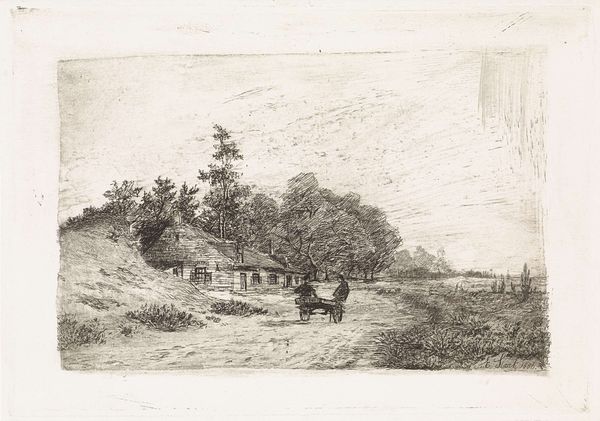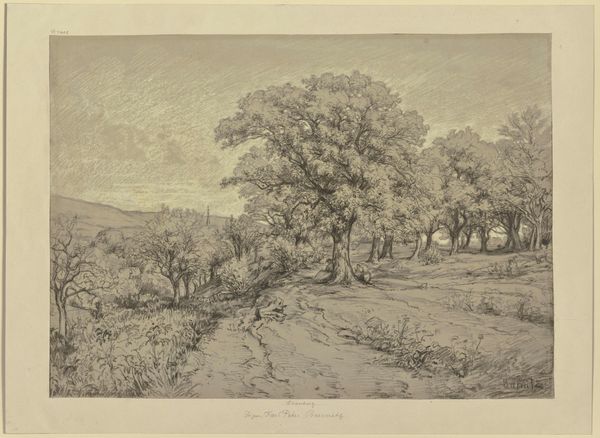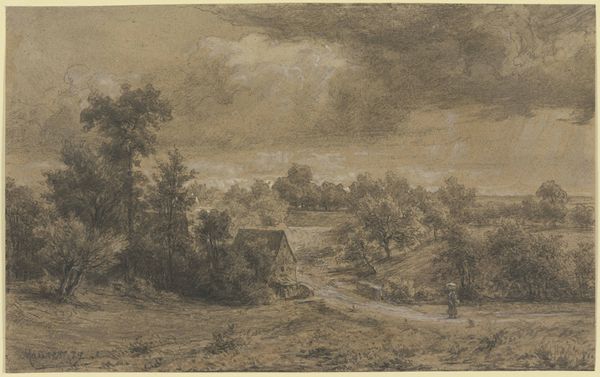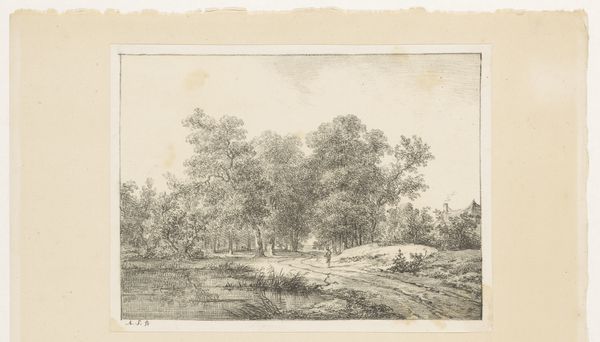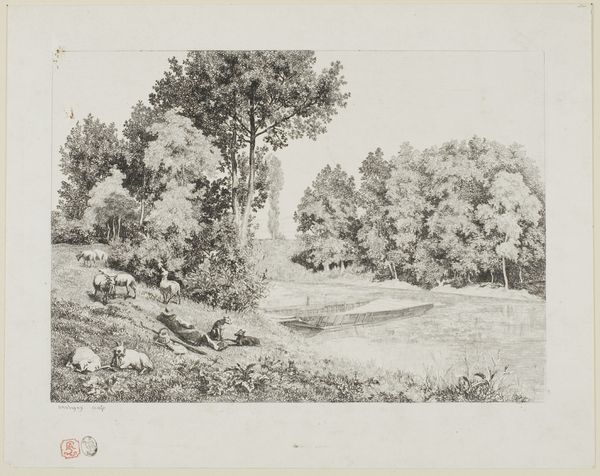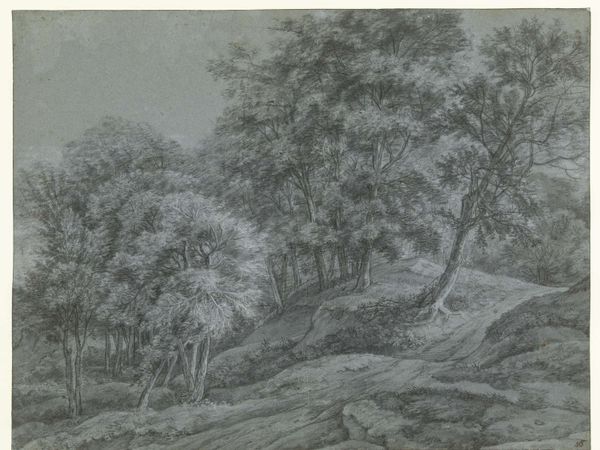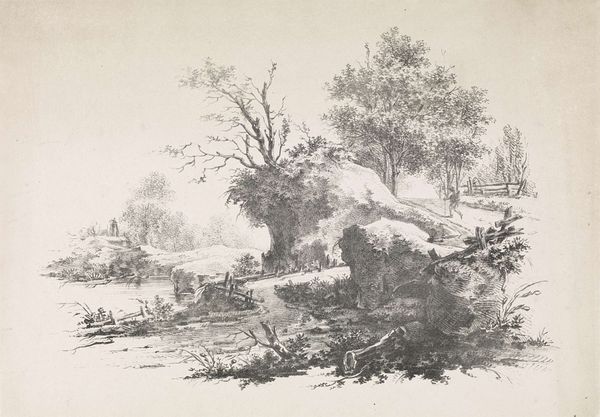
print, engraving
# print
#
landscape
#
genre-painting
#
engraving
#
realism
Dimensions: image: 274 x 508 mm sheet: 490 x 641 mm
Copyright: National Gallery of Art: CC0 1.0
Curator: This is "Going to Market," an engraving made in 1889 by Edith Penman. What's striking to you about this piece? Editor: It's quite picturesque! There’s a palpable sense of labor here, almost a stoic depiction of rural life with that laden horse-drawn cart crossing the makeshift bridge. But also, this image evokes that tension between romanticized notions of nature versus its realities as a site of production. Curator: Right, Penman renders a clear sense of space, the detailed marks describe material and also demonstrate the process, not unlike printmaking itself where labor becomes part of the art. Look closely: the density of the engraved lines shapes texture in those trees, creates volume with the barn, the depth, and especially on that humble bridge... Editor: Yes, and it is tempting to read these workers only within a pretty landscape. I think it is useful to contextualize such genre paintings to reflect upon socio-economic forces. Who has access to "nature" and under what circumstances? How does this shape how we relate to art now, especially images of rural laborers like those shown? Curator: We know very little about Edith Penman herself. As a female engraver at that time, did her position affect how she created such pieces or if this type of engraving helped support herself? Those engravings are very physical. It could be very dangerous for many female artists at the time. Editor: Indeed, such images contribute to mythologizing American identity, but how does it impact the narratives of diverse individuals—especially women—involved in agriculture but often marginalized? Also how class or race factor here because rural doesn’t mean “idyllic”. Curator: I am impressed by the detail. Given its medium, engraving, what labor might have been needed? Did Penman engage with commercial forms like posters and magazines? Editor: I'm struck thinking about how these scenes get historicized. What's rendered romantic obscures very often other histories and power structures at play. The market implies not just goods being transferred, it is the start of commerce within social lives and culture that will go further into consumer culture. Curator: Understanding the production allows you to see art like Penman’s as a key piece to understanding larger market or class systems. Editor: Understanding context challenges dominant historical views but, as an art piece, offers us potential for fresh critical reflection.
Comments
No comments
Be the first to comment and join the conversation on the ultimate creative platform.

